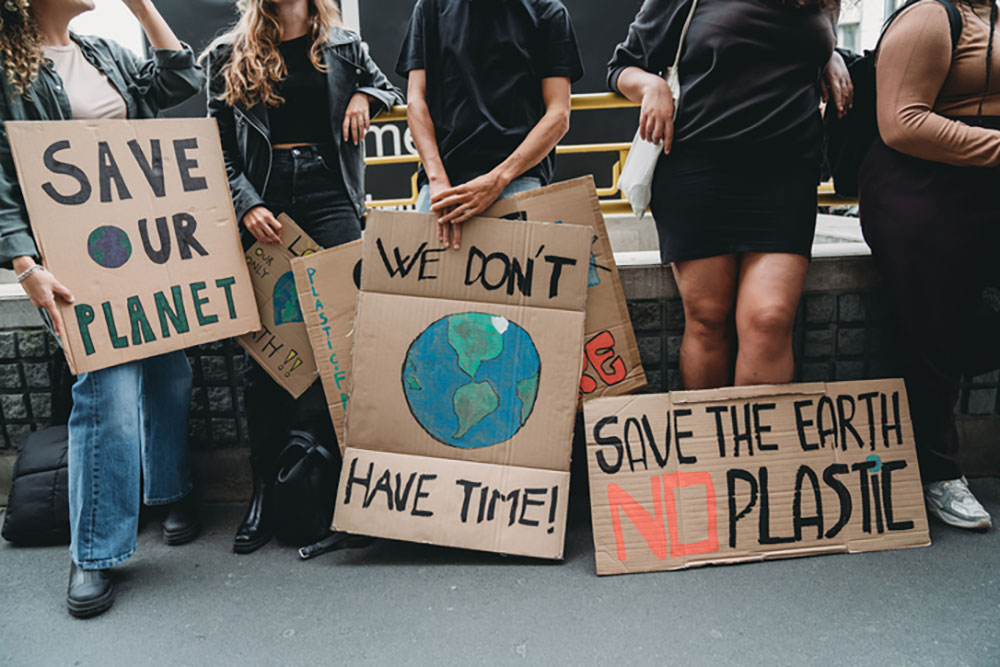
iStock
By Mary Carpenter
“I CANNOT think of many things more frightening,” Elena Kagan writes about the Supreme Court’s recent decision that loosens coal-industry pollution standards and indicates its takeover from the EPA as climate decision-maker for the country.
Climate-change messengers distraught at insufficient public outcry against its dangers have assembled health consequences, such as the recent listing of air pollution as one of nine risk factors “accounting for much of the world’s dementia,” according to the New York Times. Disease-carrying bugs like ticks and mosquitos are moving northward, and longer, higher-pollen allergy seasons are causing increased cases and more severe asthma.
In the DC area, the Air Quality Index (AQI) rose to 113 last week, with anything over 100 deemed “unhealthy”—at first for sensitive groups of people and then for everyone as AQI values get higher.
But most devastating is the Covid pandemic’s connection to climate change, which can “facilitate zoonotic spillovers” — human diseases that originate in animals like monkeys and bats, according to Nature. “Climate extremes…can also directly or indirectly affect the frequency and intensity of forest fires, droughts, floods, famines and migrations, equally acting as point stressors and exerting intense zoonotic pressure.”
U.S. life expectancy averages for 2020 put the country at #46 in the world. 79.11 years is the average for both sexes—81.65 for women and 76.61 for men, according to Worldometers. Comparing average life expectancies for women alone, the U.S. comes in at four to five years below Switzerland and Spain— and behind dozens of other countries, including Poland, Panama and Croatia.
Blame for decreased longevity falls on U.S. industries that make it “the world’s largest producer of oil, its second largest producer of gas and its third largest consumer of coal, and also its largest historical emitter by an outrageous margin,” writes David Wallace-Wells, author of The Uninhabitable Earth, in the New York Times. We are “responsible for about twice as much carbon damage already done to the planet as any other country on Earth.”
For the high DC-area AQI, one villain is fine particulate matter, PM2.5, small-sized particles that can penetrate deeply into lung tissue and from there enter the bloodstream to damage blood vessels, as well as organs like the liver, kidneys and heart. Created by combinations of airborne chemicals emitted from industries and automobiles but mostly from coal-fired power plants, DC-area PM2.5 levels are acceptable on a 24-hour and annual basis—but regular spikes exceed by two to five times the WHO annual air quality guideline.
But the greatest villain in “Washington unhealthy air quality is … elevated ozone levels,” according to IQAir, which earned the city an “F” rating for ozone in 2016-2018, the most recent monitoring period. Health risks that include respiratory infections and cardiovascular disease come from breathing ground-level ozone, created by the reaction of “precursor pollutants” such as hydrocarbons and nitrogen with sunlight.
In contrast, the stratospheric ozone layer acting as the earth’s sunscreen helps protect against harmful UV rays. But excessive carbon emissions deplete or create holes in this layer—reflected in the daily UV index that assesses “risk of harm from unprotected sun exposure.” On the same day the DC AQI reached 113, its UV index of 11 indicated “very high risk of harm.”
At high levels, carbon dioxide contributes to changes in plant growth that are responsible for longer, more severe allergy seasons —and to date have moved the season’s start to Valentine’s Day, back from St. Patrick’s Day, in some parts of the country. For the poison ivy plant in particular, recent explosive growth has led to leaves so large the plant is barely recognizable, as well as to higher levels and greater potency of urushiol oil that causes the allergic reaction and rash.
Mosquitoes carrying dengue fever have become more common in the U.S.—among cold-blooded arthropod disease vectors, which are especially sensitive to climate factors, that are moving northward. And expanding caseloads of two tick-related conditions, anaplasmosis and babesiosis, have led to severe illness and death in central New York; while the tick-borne Powassan virus has caused higher numbers of deaths nationwide.
Finally, air pollution has recently joined the list of “12 modifiable risk factors [that] account for around 40% of worldwide dementias, which consequently could theoretically be prevented or delayed,” according to the Lancet Commission on Dementia Prevention, Intervention and Care. Researchers have found traces of magnetite PM2.5 from car emissions in amyloid plaques in the brain but are still working to establish a direct link between air pollution and Alzheimer’s disease.
The U.S. “public has limited appetite for some of the more dramatic proposed changes to energy consumption, such as phasing out the use of fossil fuels entirely or ending the production of gasoline-powered vehicles by 2035,” according to a recent Pew Research Center survey. But a hopeful sign is the change in attitudes “substantially by generation” — with a majority of those born after 1981 (Generation Z and millennials) supporting these solutions.
Videos of protestors blocking DC’s beltway last week, on the other hand, show a few with gray hair — and the group Third Act is working to mobilize “experienced Americans” for campaigns and actions around the country that include climate change. Like many people, my attention and support is currently focused on the effects of a different, disastrous Supreme Court decision that restricts access to abortion, but I am increasingly worried about the long-term damages to health from climate change.
—Mary Carpenter regularly reports on need-to-know topics in health and medicine.

Excellent article, would that everyone could read and digest and act upon this information
So scary… I’m hoping maybe our grandchildren’s generation may get the needed changes but doubt will see much done in my lifetime. Hope it won’t be too late.